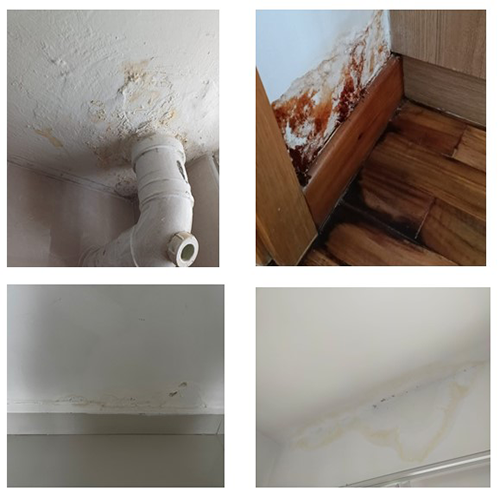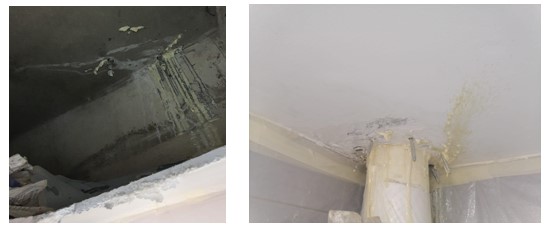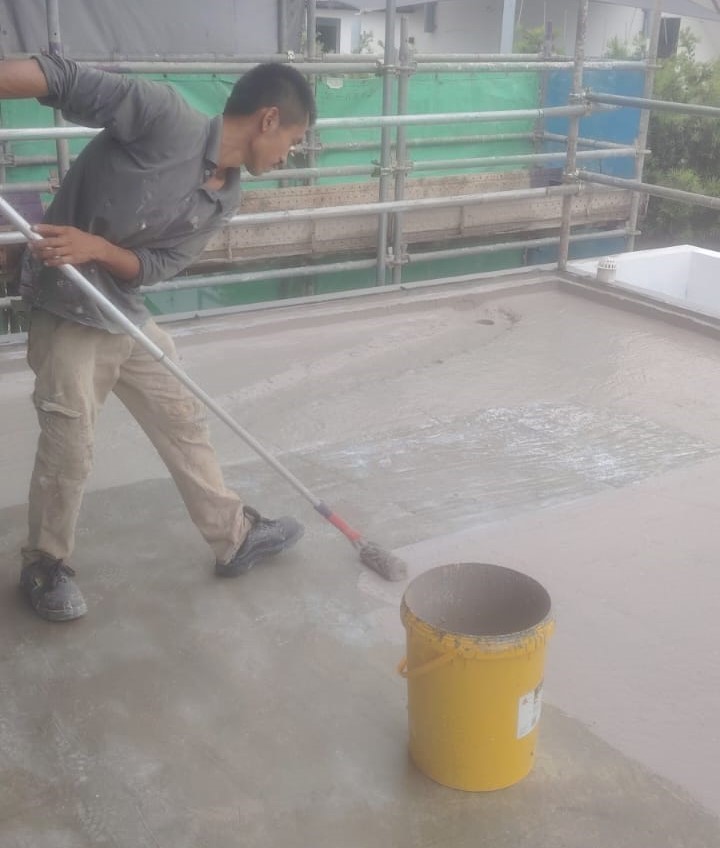In Singapore’s humid and tropical climate, managing water leaks and seepage is a frequent challenge faced by homeowners, whether they live in HDB flats, condos, or landed houses. Minor water leakage might seem inconsequential at first, but over time, even small leaks can result in serious damage to property, from mold growth to structural weakening. Quick action to address leaks not only ensures a more comfortable living space but can also prevent costly repairs in the long run. This comprehensive guide will explore the common causes and signs of minor leaks across different types of residences in Singapore, discuss practical repair methods, and outline what responsibilities fall on homeowners or property managers when it comes to addressing these issues.
Common Minor Waterproofing Leaks in Singapore Homes
Water leakage issues vary depending on the type of property, each presenting its own unique challenges in terms of the origin, type, and scope of leakage.
HDB Flats
In HDB flats, minor water leakage is a common concern, especially in high-use areas like bathrooms, kitchens, and windows. Due to the high-density nature of HDB housing, a leak from one unit can often impact other units nearby. Ceiling leaks, for instance, are frequent in bathrooms and kitchens, usually due to water seepage from the unit above. This is often seen as a yellowish stain or bubbling in the paint on the ceiling, which can eventually lead to more severe water damage if not addressed. Wall leaks are also common and can result from the degradation of waterproofing membranes, plumbing issues, or even slight shifts in building structure over time. Left unchecked, such leaks can lead to persistent dampness, peeling paint, and mold growth, affecting both the quality of life and property value.
Condos
In condo units, minor water leaks are often found in bathrooms, balconies, and around shared walls. High-rise living introduces additional challenges, such as balcony seepage from exposure to rain and leaks from neighboring units through shared walls or floors. In particular, balcony leaks can be caused by insufficient waterproofing or cracked floor tiles that allow rainwater to seep into the unit below. This can result in concrete slab dampness, which not only affects the unit’s aesthetics but can also lead to structural issues over time. Condo residents must also consider the complexity of shared infrastructure, such as piping that may span multiple units, which can make leak identification and repairs challenging. In many cases, responsibility for addressing leaks in common areas may fall to the building’s management, while leaks within individual units are typically the owner’s responsibility.
Landed Houses
In landed houses, the most frequent sources of leaks are the roof, garden areas, and basement. Roof leaks are a particular concern, as roofs are directly exposed to Singapore’s heavy rains and intense sunlight, which can degrade waterproofing membranes over time. Leaks in the roof may manifest as damp patches on ceilings or even direct drips during heavy rain. Concrete slab dampness and seepage in basements are also common issues, often stemming from poor drainage around the property, leading to water pooling near the foundation. This can be exacerbated by insufficient waterproofing, resulting in mold growth, unpleasant odors, and potential structural risks. Landed homeowners are fully responsible for all aspects of waterproofing and water leak repair in their property, requiring them to be proactive in maintenance to avoid major issues.
How to Fix a Minor Waterproofing Leak
The approach to fixing a minor waterproofing leak depends on the affected area, the severity of the damage, and the location of the leak.
Wall and Ceiling Leaks:
Minor wall or ceiling leaks can often be repaired using PU injection grouting. This method involves injecting polyurethane, a waterproofing compound, directly into cracks or joints where leaks are occurring. Once injected, the PU grout expands to fill gaps, creating a durable waterproof barrier that prevents further water infiltration. This is especially useful in situations where the leak is affecting a small area but could worsen without treatment.
Bathroom Leaks:
Bathrooms are prone to leaks due to high humidity levels and frequent exposure to water. Waterproofing membranes can be applied behind tiles to prevent water from seeping through to the walls and floors. For minor leaks, resealing tile grout or applying a waterproof sealant to problem areas can be a quick fix. However, if the underlying waterproofing has deteriorated, more extensive repairs may be required, such as reapplying waterproof membranes to ensure long-term durability.
Roof Leaks:
Minor roof leaks can often be managed by applying a waterproof coating to seal visible cracks and reinforce existing waterproofing. In more severe cases, reapplying a full waterproofing membrane may be necessary to ensure comprehensive protection. For specific areas prone to leaks, such as roof joints or gutters, using a specialized sealant can offer a temporary solution, although regular maintenance is essential to prevent future issues.
While temporary fixes like sealants or waterproofing sprays can provide short-term relief, homeowners should engage a waterproofing specialist for comprehensive repairs to ensure long-term effectiveness. This is recommended in high-risk areas like bathrooms, roofs, and shared walls in condos.
Repair Methods for Waterproofing Leaks in Singapore
Waterproofing contractors in Singapore offer a range of repair methods to address minor leaks, each suited to specific types of issues.
PU Injection Grouting:
PU Injection Grouting is a targeted and effective repair method, ideal for sealing cracks in concrete and masonry structures. This process involves injecting a liquid polyurethane resin directly into the affected area, where it expands upon contact with moisture to create a dense, watertight seal.
PU injection grouting is often used for minor leaks and cracks in walls, floors, and ceilings, as well as around window frames, plumbing penetrations, and expansion joints. The process begins with cleaning the area and drilling small injection ports along the crack. Under pressure, the resin is then injected, filling the entire crack as it expands upon contact with water, quickly sealing off any leaks. The cured polyurethane creates a flexible, durable barrier that adapts to minor structural shifts. While PU injection grouting is fast, non-invasive, and long-lasting, it’s most effective for smaller cracks; larger or more severe waterproofing issues may require additional treatments or methods.
Waterproofing Membranes:
Applying a waterproofing membrane involves creating a barrier over surfaces that prevents water from penetrating the underlying materials. This is commonly used in bathrooms, balconies, and rooftops and terraces to prevent leaks and seepage in areas exposed to water. Available as both liquid-applied coatings and sheet-based layers, membranes are versatile and can be tailored to different areas. Liquid-applied membranes are rolled or sprayed onto surfaces to create a seamless, uniform layer that resists water penetration, while sheet-based membranes are laid in sheets and sealed to create a continuous barrier.
The process starts with cleaning and preparing the surface, followed by applying the membrane carefully to cover all areas. These membranes are highly durable, versatile, and offer strong waterproofing for both indoor and outdoor use. However, they require precise application, as any gaps or uneven coverage can compromise their effectiveness. In some cases, sheet membranes may need an additional protective layer to shield them from UV exposure and wear.
Cementitious Waterproofing:
This technique uses a cement-based coating to waterproof surfaces, which is particularly effective for concrete slabs and basement walls. Cementitious waterproofing is highly durable, providing a long-lasting solution for areas prone to water exposure.
This approach is well-suited for high-moisture areas like basements, water tanks, swimming pools, and retaining walls. Cementitious waterproofing involves mixing a cement-based slurry with waterproofing compounds, which is then applied over the surface. The coating bonds tightly to the concrete, forming a rigid, water-resistant layer. Applied with a brush, roller, or trowel, this method is easy to use and durable, making it a popular choice for concrete structures in continuous contact with water, like foundations. Though cementitious waterproofing is effective, it has limitations—its rigidity makes it prone to cracking in areas subject to structural movement, and it may be less durable in high-traffic zones unless further protected.
Each method comes with its own costs and suitability, and homeowners should consult with a BCA-certified waterproofing contractor to select the best option for their specific needs.
Identifying Waterproofing Leaks and Seepage
Identifying waterproofing leaks and seepage early is crucial for preventing significant damage to your property. Here are some common signs and symptoms to look out for, categorized by location and type:
Visible Water Damage
Water Stains:
Look for brownish or yellowish stains on walls or ceilings. These discolorations often indicate water infiltration, and they may expand over time if left unaddressed.
Mold and Mildew Growth:
The presence of mold or mildew is a clear sign of moisture issues. These fungi thrive in damp environments and can pose health risks, making immediate attention necessary.
Bubbling or Peeling Paint:
Paint that is bubbling, blistering, or peeling away from walls can indicate moisture accumulation behind the surface, signaling a potential waterproofing failure.
Structural Issues
Cracks in Walls and Foundations:
Hairline fractures may develop into more extensive damage due to water pressure, indicating that water is seeping into or through the structure. Larger cracks can allow more significant water intrusion.
Damp or Soft Spots:
Areas of the wall or floor that feel damp to the touch or have become soft may indicate that water has infiltrated the structure, leading to rot or decay, particularly in wooden structures.
Flooring Problems
Warped or Buckled Floors:
Hardwood or laminate flooring that is warping or buckling can result from moisture exposure underneath the surface. This can also occur in tile floors, which may start to loosen or crack.
Sinking Floors:
If floors appear to be sagging or sinking, it may indicate that moisture is causing the foundation or subfloor to deteriorate, leading to structural instability.
Odors
Musty Smells:
A persistent musty odor in certain areas of your home is often a sign of trapped moisture or mold growth. This odor is a warning signal that should not be ignored.
Increased Humidity
High Humidity Levels:
Excessive humidity in indoor spaces can be a result of waterproofing failures. Using a hygrometer to measure humidity levels can help identify whether moisture levels are abnormal, potentially indicating a leak.
Pooling Water
Puddles or Water Accumulation:
Standing water or pooling in certain areas, particularly in basements, around windows, or near foundation walls, is a direct indicator of water intrusion. Pay attention to areas where water accumulates after rain or during heavy storms.
Ceiling and Roof Issues
Ceiling Leaks:
Water dripping or pooling on the ceiling can be a sign of a roof leak or an issue with the waterproofing of the roof. This is particularly concerning if it occurs after rain.
Damaged Roof Flashing:
Inspect roof flashing around vents, chimneys, and skylights for any signs of damage or deterioration, as these areas are common sources of leaks.
Basement Problems
Damp Walls or Floors in the Basement:
If your basement walls or floor feel damp or show signs of moisture, this can indicate a waterproofing issue, particularly if the problem persists even in dry weather.
Efflorescence:
The presence of white powdery deposits on the surface of basement walls or floors, known as efflorescence, is a sign that water is seeping through the concrete and evaporating, leaving mineral deposits behind.
Bathroom and Kitchen Signs
Leaking Fixtures:
Check under sinks and around bathtubs or showers for signs of leaks. Water pooling or staining around plumbing fixtures can indicate plumbing issues or waterproofing failures.
Caulk Damage:
Cracked or deteriorating caulk around bathtubs, sinks, or shower areas may allow water to seep into walls or floors, leading to further leaks and damage.
Seasonal Variations
Rainy Season:
Pay extra attention to leaks or seepage during the rainy season, as heavy rainfall can exacerbate existing waterproofing issues. If you notice new signs of water intrusion during this time, it may indicate that your waterproofing system is inadequate.
In HDB flats, damp patches in the bathroom or kitchen ceilings are common indicators of seepage, while condo owners should inspect balconies and external walls for early signs. In landed houses, water pooling near the foundation or basement walls could signal inadequate waterproofing.
Minor water leaks are a common issue in Singapore, impacting all types of housing. Early detection and appropriate repair methods are crucial for preventing these issues from escalating into major repairs. Homeowners should choose a reputable, BCA-certified waterproofing contractor for reliable, long-lasting solutions. By investing in regular maintenance and staying vigilant for signs of leaks, homeowners can maintain a safe, comfortable, and dry living environment.
SWC Construction is here to provide a hassle-free solution. Our expert team specializes in addressing small leaks efficiently, ensuring that repairs are completed quickly without disrupting your daily life.
We prioritize your convenience and peace of mind by using effective methods and quality materials to deliver long-lasting results.
With numerous satisfied clients praising our prompt and professional service, you can trust SWC Construction to handle your minor leakage repairs with ease.
Reach out to us today for a seamless and worry-free experience!





